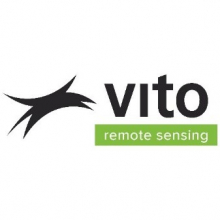Objectives of the service
The main objectives of the SSMART feasibility study are:
- To identify the stakeholder and user needs related to the transport of dangerous goods. Users in the commercial sector (infrastructure operators, logistic companies) as well as public authorities will be considered.
- To design a system and service architecture compliant with the user requirements.
- To identify critical elements of the architecture and to validate the feasibility of the critical elements through a proof-of-concept.
- To carry out a cost/benefit analysis for the service and to identify the critical non-economic elements (like legal and regulatory frameworks to be respected).
- To assess the technical feasibility and the commercial viability
- To prepare a future demonstration mission with a strong involvement of the user community.
Users and their needs
- Areva. French multinational conglomerate of industries, its main activities are nuclear power generation and electricity transmission and distribution.
- EXMAR created in 1828, it offers ship transportation of oil and gas as well as studies, management and administrative activities for this industry.
- SNCB is the Belgian national railway operator. Its main activities are national / international transport of passengers, transport of merchandises as well as logistic services.
- TDG MOND is a logistic and transportation company specialized in chemical products. MOND works principally in the Benelux region, Germany and North of France.
Service/ system concept
The SSMART stakeholder group expects a service and system able to track transports of dangerous goods. The system shall provide information on the type of cargo, the status of the transport (including environmental variables), as well as the position. Coordinated by a service centre, companies and authorities shall be quickly notified in case of an accident. Information on the cargo shall be available to provide a thorough understanding of the situation and to handle it properly. The system will allow simulations of the potential propagation of dangerous goods in case of an accident, for the authorities to protect or evacuate the potentially affected area.
Space Added Value
- Navigation: By using GPS and augmentation systems such as EGNOS, the transports of dangerous goods will be tracked. One potential solution is re-routing of vehicles following safety considerations, e.g. to avoid traffic jams, road works or difficult weather conditions. In case of an accident, the exact position of the transport is vital to know.
- Satellite communications: In case of poor or no coverage of cellular networks, a satellite network, presenting a highly reliable communication channel, will be used as a back up. Satellite communications will take place also in case of cellular network saturation which often occurs during a crisis / emergency situations.
- Earth Observation: Data from remote sensing satellites will be used for mapping applications and for disaster management
Current Status
The Final Review of the SSMART feasibility study took place on 30th November, 2011. Favourable results were obtained in economic, non economic, and technical terms.
The following step is the demonstration phase. A roadmap has been prepared detailing how the overall capabilities of the system will be implemented and tested under realistic operation conditions. The industrial consortium behind the demonstration phase will receive a world class leader in the nuclear power generation and transport sector as a new member.
Positive results from the demonstration phase should lead to first a pre-exploitation phase and then to a full exploitation phase of SSMART.
Prime Contractor(s)
Subcontractor(s)





